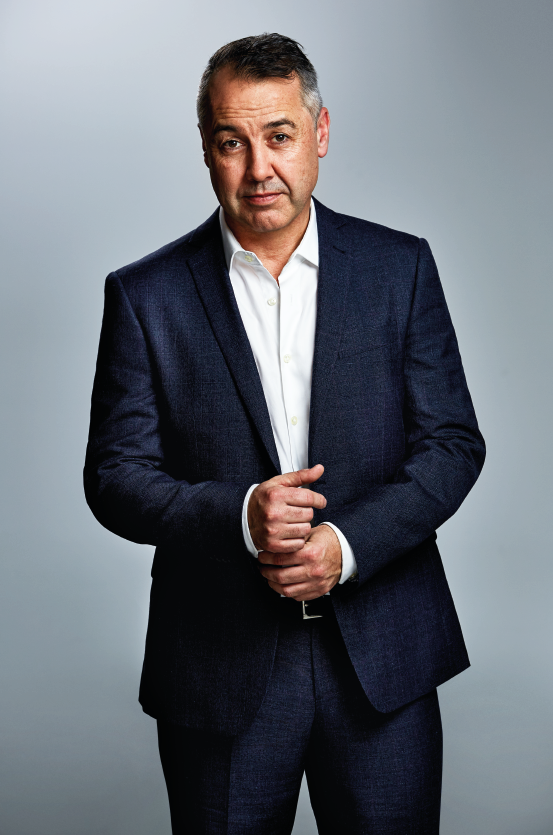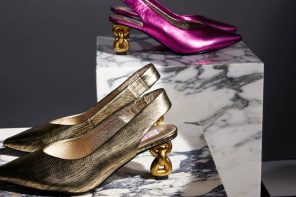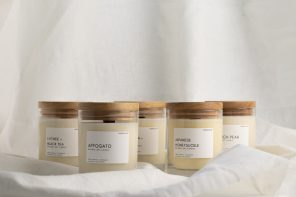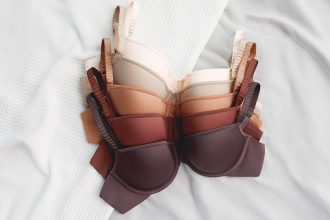Apparel Magazine got the chance to sit down with Wade Hawkins, the head of menswear buying for Farmers department stores. Hawkins has had an eventful career in the fashion industry, which started on the shop floor of Barkers. Hawkins moved his way up in the industry as he rose to the head office of Barkers, and then to a buying position at Hallensteins in the year 2000. When the position of menswear buyer for Farmers came his way, it was a job Hawkins said he could not refuse.
At Farmers, Hawkins oversees the operations of the menswear department, which is split into five categories: underwear and socks, formal, classic, contemporary and modern. “I am responsible for challenging the buyers of each sector and helping them to make the right decisions,” explained Hawkins. “The great thing about this division is that everyone here is so knowledgeable, it’s like having five businesses under one roof.” Each of the five departments in Farmers' menswear contributes to appealing to the department store’s extensive variety of consumers. “The Farmers consumer covers a broad spectrum,” said Hawkins. “We are fundamentally a family store, we are not high end, and our range has to cover the whole of New Zealand so we can’t just focus on one thing.” To meet the needs of this diverse consumer, Farmers has an extensive mix of house brands and third-party designers to maintain a good balance of appeal.
When it comes to choosing which brands make the cut for their department, Hawkins expressed the straightforward direction of their decision making. “Quality, price point and style,” asserted Hawkins. “At the end of the day it’s got to be commercially viable, we would not be going down a road that isn’t going to sell.” Hawkins continued that with the scale of their organisation, Farmers’ buyers look for collections that are able to fit in with their diverse range of consumers, as well as the ability to meet logistical targets. “Scale comes into it a lot. It’s all very well and good that you can make 20 garments. But can you make 600 that are all within the same level of quality?” He told Apparel Magazine that Farmers, like any other business, have margins and price targets that they have to hit and a brand’s ability to help them reach those targets is one of the biggest draws for their company.
At the end of the day it’s got to be commercially viable, we would not be going down a road that isn’t going to sell.
In terms of style, Hawkins discussed the way menswear has changed throughout his time at Farmers, and the new directions the department sees their aesthetic moving toward. “Menswear has certainly become more adventurous. Before everything had to be black or grey. However, this year our bolder and brighter aesthetics were more popular, and made up eight of our ten bestselling shirts for the season,” Hawkins stated. To fit this new trend, Farmers is looking at third-party designers to pad out the spaces between the aesthetics of their house brands. “We are not looking for the same thing from every designer, we are looking to fill the gaps in order to look after each of our individual consumers,” he added. It is much harder for niche brands to find a place in stores like Farmers, with such a mass market appeal. Brands need to comply with the stores existing image, rather than expecting the store adjusting to theirs. “We are not a boutique, and we don’t have the size to do mini capsules,” Hawkins asserted. While this call to adjust to Farmers image may be seen as stifling to some designers, the menswear buyer communicated the immense potential the department store has to sustain a brand. “Getting into a department store means you are looking at a 400 or 500 order as a minimum, and for a small brand that is significant,” he said. “We can be a designer’s bread and butter.”
We are open to everything, but it needs to make sense and be done justice because everything takes up space, so you’ve got to earn your keep on the wall and on the shop floor.
Due to the scale of their organisation Farmers has the ability to tier their stock, giving a broader range of opportunities to designers. “We do a bit of exclusive stock to certain stores. House labels basically go everywhere, but some of the third-party brands are distributed differently,” reported Hawkins. “The good thing about Farmers is that we have the capacity to tier in this way, not all of our designs have to go to every store.” With outlets from Kaitaia to Invercargill, Hawkins related the great potential that is held for stores such as Farmers in areas outside of central cities. “There is a lot of power in the regions. Auckland or Christchurch, that is where big international players come to set up shop,” he explained. “The pie is only so big, and when these internationals come it only slices it up more. Whereas internationals aren’t going to open up in smaller regions.” The absence of international powerhouses in smaller regions give New Zealand stores like Farmers the monopoly in these areas, thus providing greater exposure for their brands.
For designers who are looking to become involved with Farmers, Hawkins’ advice was simple. “Get yourself known, get yourself out there and go from there. Every brand starts out somewhere,” he assured. “We are open to everything, but it needs to make sense and be done justice because everything takes up space, so you’ve got to earn your keep on the wall and on the shop floor.” There is a great deal of potential for new brands to enter the Farmers team particularly as the store looks to embrace the new, more fashion-conscious male buyer. “Guys are buying more and more and realising that it is ok to look good. To provide for them, we need to present ranges that are new, giving them a reason to buy. Hence menswear is currently dropping a lot more products, a lot more often,” stated Hawkins. “We are pretty excited by what we are seeing at the moment, and we hope it continues.”






